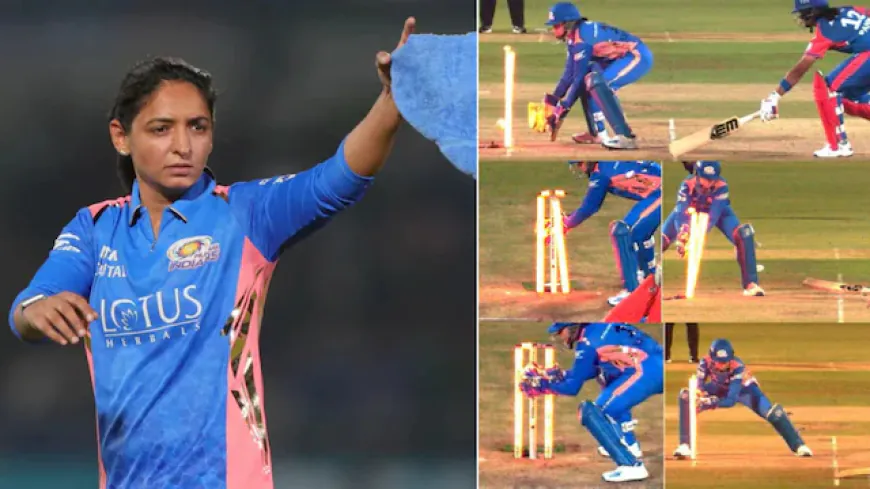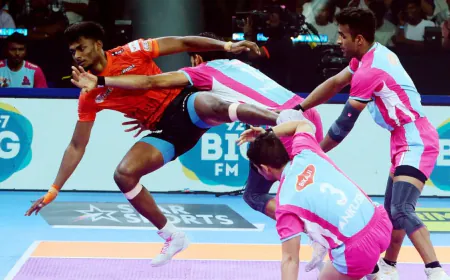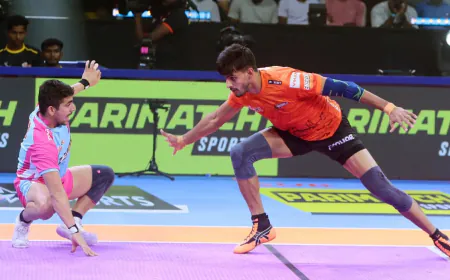Controversial Run-Out Decisions Sully DC's One-Ball Victory Over MI
Run-out controversies cast a shadow on Delhi Capitals' dramatic one-ball win against Mumbai Indians in IPL 2025. Read on for the drama and reactions.

The thriller of the Women's Premier League (WPL) game between Delhi Capitals (DC) and Mumbai Indians (MI) reached its heart-stopping climax with DC taking victory on the last ball. But what could have been an appreciation for nerve-wracking cricket was instead sullied by controversy. A series of run-out decisions, adjudicated by third umpire Gayatri Venugopalan, polarized players, commentators, and fans over the interpretation of the rules. The decisions were critical to DC's narrow win, sparking indignant debate over the umpiring process and the application of the playing conditions.
The Disputed Run-Out Rulings
Three important run-out decisions were the focal point of the game, all occurring in the final overs. They involved Shikha Pandey in the 18th over, Radha Yadav in the 19th over, and Arundhati Reddy on the final ball of the game. All three of these run-outs had significant impacts on the outcome, and all three were controversially criticized.
In the cases of Pandey and Reddy, the replay pictures showed that neither of the batsmen appeared to have any part of their bat or foot outside the crease when the LED stumps lit up. However, Venugopalan ruled them not out, citing the regulation that the bails must be completely dislodged from the stumps before a batter is declared run out. This was the rule interpretation that led to general confusion, as it is something that is known by all that the moment the LED lights are lit, the stumps are deemed broken.
The decision over Radha Yadav was more baffling. Yadav had taken a suicidal single after having played the ball to backward point. Despite diving full-stretch, TV replays showed that her bat was in the air even while the bails were dislodged. Miraculously, the third umpire gave her the benefit of doubt and declared her not out. Things went from bad to worse for MI as Yadav then smashed a six off the next ball, leaving just 10 runs required off the last over, making the match once again decidedly DC's.
Harmanpreet Kaur’s Frustration and MI’s Dismay
MI captain Harmanpreet Kaur was obviously upset with the umpiring, particularly the ruling in Shikha Pandey's favor. She was seen having a fiery argument with the on-field umpires in a bid to make out the reasoning behind the verdict. She failed to make an open protest regarding the run-out rulings for Reddy and Yadav towards the end of the game, even though controversy was mounting.
The series of questionable decisions left MI feeling aggrieved, as two crucial wickets could have altered the outcome. The frustration was evident among players and MI’s supporters, who felt that the third umpire’s inconsistent interpretations played a decisive role in the match’s result.
The Playing Conditions and Rule Interpretation
The WPL Playing Conditions, specifically Clause 4.2 in Appendix D, outline the protocol for Decision Review System and Third Umpire interventions. It states that the moment the LED lights are lit when LED wickets are utilized, that is the time that the wicket has been laid. Clause 29.1 also clarifies that a wicket is stated to be 'broken' if one bail or more is removed totally from the stumps or if a stump is removed from the ground.
Under these regulations, the argument against the third umpire's decisions is reinforced. The moment the LED lights are turned on should be the frame of reference, i.e., both Pandey and Reddy were out of their crease. However, Venugopalan's decisions appeared to place greater emphasis on whether the bails were completely removed before calling a batter out, as opposed to the general understanding.
Expert Reactions-A Divided Opinion
Post the game, several cricket experts shared their views about the contentious run-out calls. Some of the harshest criticism came from former players Stacy-Ann King and Mithali Raj.
King pointed towards Pandey and Yadav incidents and clarified, "The direct hits which were seen proved that the batter was on the line when the stumps were broken. All of us sitting in the commentary box thought that it was out, but the umpire ruled it as not out. The decision proved to be expensive, especially with Yadav's subsequent six.".
Mithali Raj was unable to describe Yadav's survival, saying, "If you dive and your bat hits the ground first before getting lifted up, then you are not out. But here, the blade of Yadav's bat didn't hit the ground even once. It was in the air, so she must have been out."
Lisa Sthalekar and veteran New Zealand coach Mike Hesson were also confused about this. Sthalekar tweeted on her social media page, "Have I misunderstood the rules? Were they two legitimate run-outs?" Hesson also commented, "Don't know why the umpire did not take notice of the LED bail activation tonight. When the lights come on, the wicket is ruined. That is in the playing conditions! I've never seen more confusion in 10 minutes than I saw tonight.".
The Bigger Picture-Umpiring Rules and the Need for Clarity
The controversial end to the match has highlighted again the issue of the quality of umpiring and the need for enhanced clarity of interpretation of the rules. With technology playing such a vital role in modern cricket, differences in its application can have severe repercussions. If the interpretation of an umpire can so radically alter the outcome of a game, there must be uniformity in the way in which these decisions are arrived at.
MI’s frustration is understandable, as these run-out calls directly impacted their chances of securing victory. While umpires do their best to make the right calls, incidents like these highlight the necessity of clear communication and adherence to playing conditions to avoid unnecessary controversies in the future.
Conclusion-A Victory Overshadowed
Even as Delhi Capitals savor the brilliance of their finish-on-the-ball achievement, controversy-shrouded officiating rather than on-field actions will forever associate the contest in the popular perception. Uncertain decision-making left a foul aftertaste in the mouths, and major concerns are arising as to why and how much they are dependent upon third umpires and even as to if the technology-induced judgment needs the sanction of the ordinary.
As the WPL goes on, only time will tell whether attempts will be made to avoid such controversies from crossing the spirit of the game. Until then, MI will be left wondering what might have been, and the cricketing world will continue to wonder whether they were robbed of a crucial win unfairly.




















































